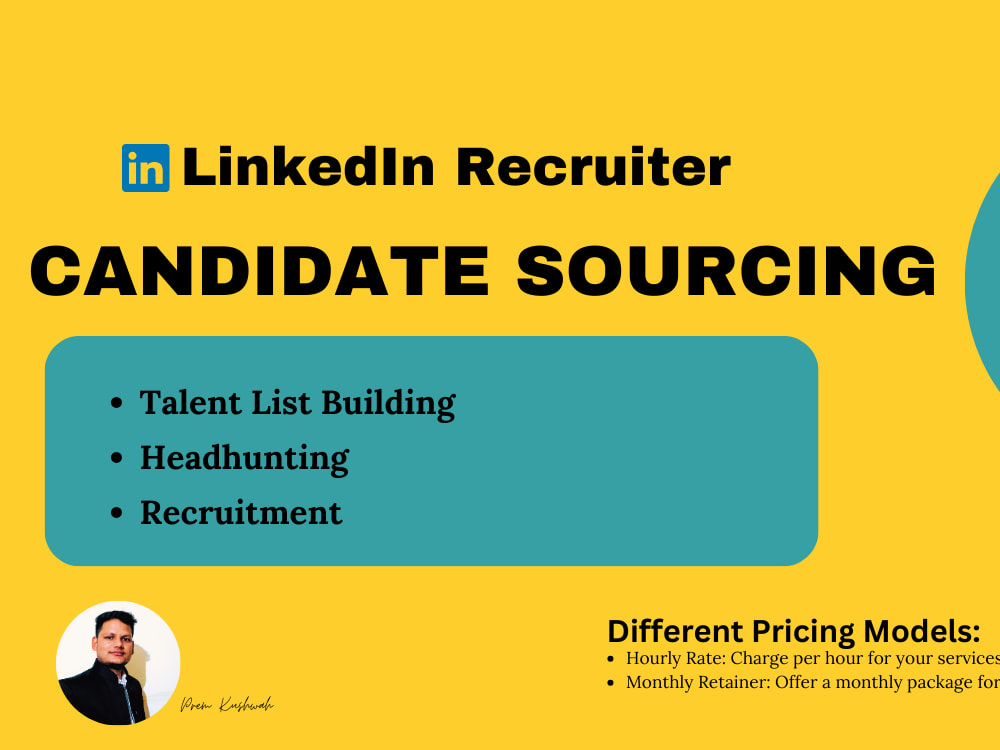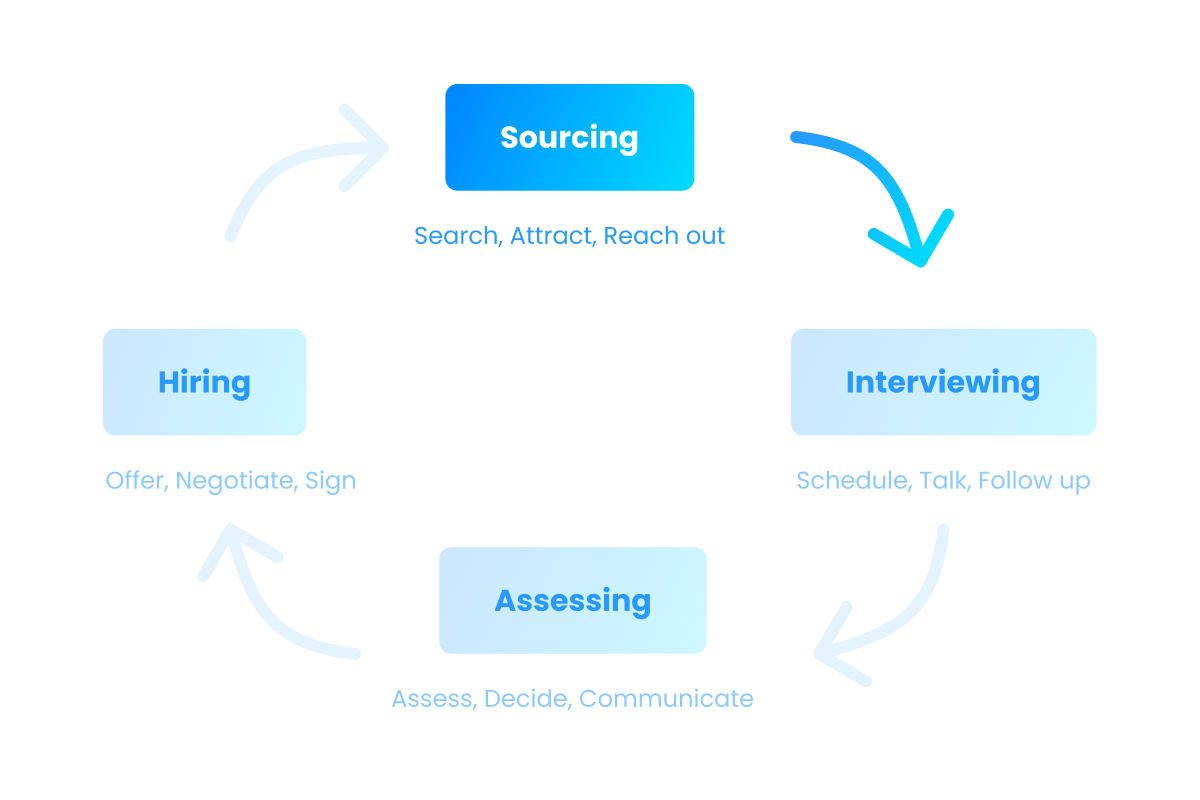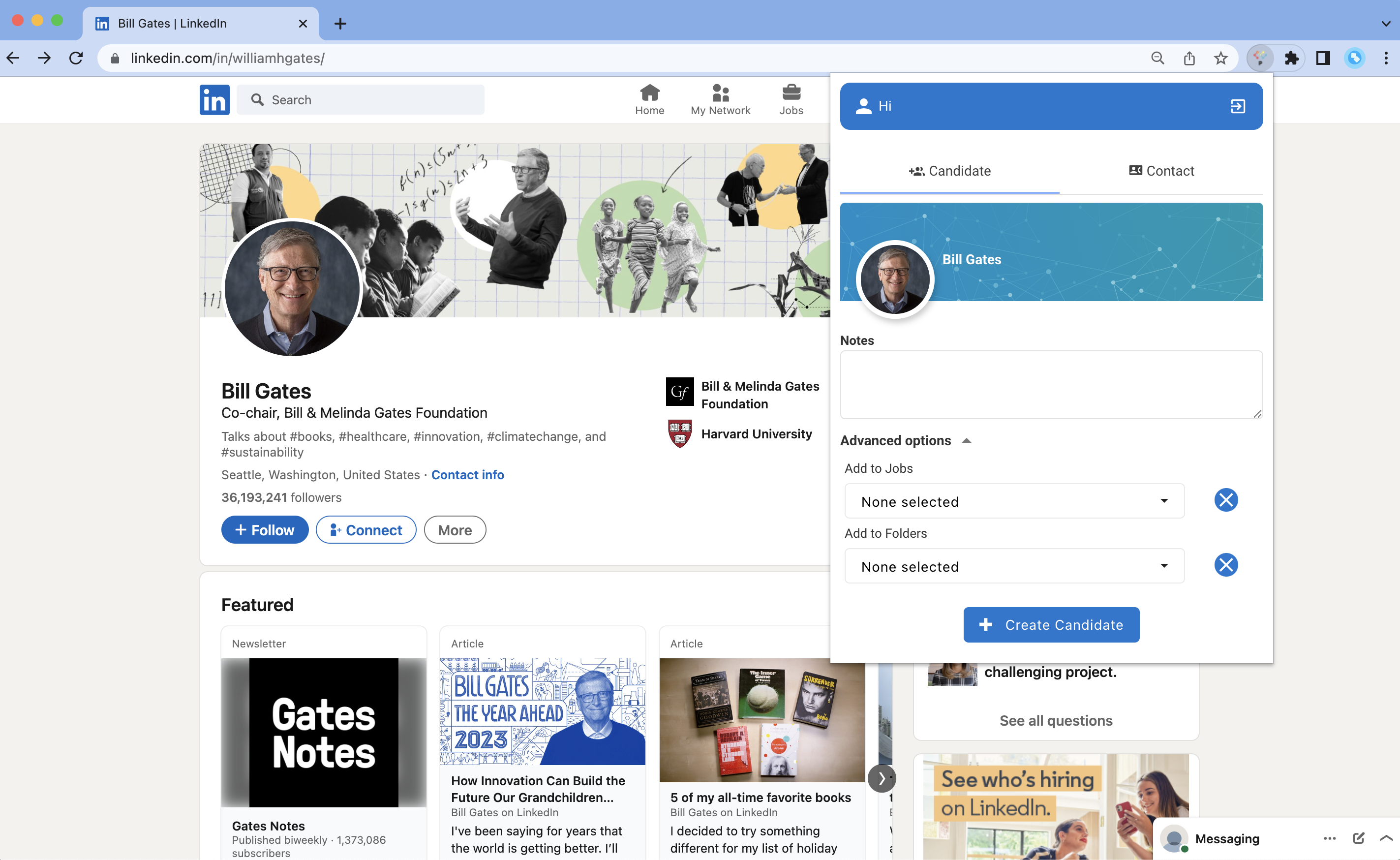In today’s digital age, finding top talent can feel like searching for a needle in a haystack. Enter LinkedIn—the social media platform that's more than just a networking site; it's a powerful recruitment tool! With over 900 million users globally, LinkedIn connects recruiters directly with potential candidates. This not only saves time but also enables recruiters to tap into a diverse talent pool. Whether you’re looking for entry-level positions or executive roles,
Creating an Effective LinkedIn Profile for Recruitment

Your LinkedIn profile is your digital storefront, and first impressions matter! To attract the right candidates, you need to ensure your profile stands out. Here’s how you can create an effective LinkedIn profile for recruitment:
1. Use a Professional Profile Picture:
Your profile picture is the first thing candidates will see. Choose a clear, professional headshot that conveys approachability and confidence. A friendly smile can make a huge difference!
2. Craft a Compelling Headline:
Instead of just stating your job title, use the headline space to highlight your recruitment specialty. For instance, “Tech Recruiter Specializing in AI and Machine Learning” is far more engaging than simply “Recruiter.”
3. Write a Captivating Summary:
Your summary is your chance to showcase your personality and recruitment philosophy. Here’s a quick structure:
- Start with a hook: Something like, “Passionate about connecting talent with opportunity!”
- Highlight your expertise: Mention industries you focus on and the types of roles you fill.
- Include a call to action: Encourage potential candidates to reach out or connect.
4. Showcase Your Experience:
List your previous roles, focusing on achievements rather than just responsibilities. Use bullet points for easy readability. For example:
| Role | Company | Achievements |
|---|---|---|
| Senior Recruiter | XYZ Corp | - Increased hires by 30% within one year |
| Recruitment Manager | ABC Inc. | - Developed a talent pipeline that reduced time-to-fill by 50% |
5. Build Connections:
Networking is key on LinkedIn. Connect with industry professionals, join relevant groups, and participate in discussions. The more active you are, the more visibility you’ll gain.
6. Post Regularly:
Share articles, insights, and job postings to keep your network engaged. This not only keeps you top of mind but also positions you as a knowledgeable authority in your field.
7. Optimize for Search:
Use relevant keywords throughout your profile. Think about what potential candidates might search for—skills, job titles, or industry terms—and sprinkle these into your headline, summary, and experience sections.
Remember, an effective LinkedIn profile is a living document. Regular updates, a polished presentation, and engagement with your network can transform your recruitment efforts. With the right approach, LinkedIn can be your secret weapon in attracting the best talent!
Also Read This: Should You Show Retired Status on LinkedIn? Here’s How
3. Using Advanced Search Features to Identify Potential Candidates

When it comes to finding the perfect candidates on LinkedIn, the platform's advanced search features are your best friends. Imagine having a treasure map that leads you directly to the gems hiding in the vast sea of LinkedIn profiles. That’s what advanced search can do for you!
First, let’s talk about how to access these powerful tools. You can easily find them at the top of the LinkedIn homepage. Click on the search bar and then select “People” to narrow down your search. Here’s where the fun begins! You can filter candidates based on:
- Location: Find candidates in specific cities or regions.
- Industry: Focus on professionals in your field of interest.
- Current Companies: If you’re looking for talent from a competitor or a specific organization, this is key.
- Past Companies: Sometimes, the best candidates come from places you might not expect!
- School: Target alumni from specific universities or programs.
- Keywords: Use specific terms related to the skills or experiences you desire.
By combining different filters, you can create a highly targeted search. For instance, if you’re looking for a software engineer with experience in AI based in San Francisco who graduated from Stanford, you can input all these criteria. It’s like having a tailored suit that fits just right!
Another feature worth exploring is the Boolean search capability. This allows you to use operators like AND, OR, and NOT to refine your searches even further. For example, searching for “software engineer AND (Python OR Java)” will give you candidates who fit either programming language. This method can save you hours of scrolling through irrelevant profiles.
Once you’ve found potential candidates, it’s a great idea to save your searches. LinkedIn allows you to save up to three searches, and you’ll receive notifications whenever new candidates match your criteria. This means you can stay on top of fresh talent without constantly searching again!
Also Read This: How to Connect on LinkedIn Without Knowing the Person: Best Practices
4. Strategies for Engaging with Candidates on LinkedIn

Now that you’ve identified some promising candidates, the next step is to engage with them. This is where the real art of recruitment comes into play. Engaging effectively can turn a passive candidate into an enthusiastic applicant. Here are some strategies to consider:
- Personalized Connection Requests: Instead of sending generic connection requests, take a moment to personalize your message. Mention something specific from their profile, like a project they worked on or a shared connection. For example, “Hi Jane, I noticed your experience in cloud computing at XYZ Corp. I’d love to connect and discuss potential opportunities with you!”
- Share Valuable Content: Engage candidates by sharing articles, webinars, or insights related to their field. For instance, posting about the latest trends in UX design can spark interest and show that you are knowledgeable in their area.
- Join Relevant Groups: Participate in industry-specific LinkedIn groups. This is a fantastic way to meet potential candidates and establish your presence as a thought leader in the field.
- Follow Up Thoughtfully: If someone accepts your connection request, don’t hesitate to follow up with a friendly message. Ask about their current projects or share insights that could benefit them. Approach it as a conversation rather than a sales pitch.
Lastly, don’t forget to showcase your company culture! Sharing behind-the-scenes content or employee testimonials can make your organization more attractive. Candidates are more likely to engage if they see a workplace that values its employees.
By employing these strategies, you’ll not only find the right candidates but also build meaningful relationships that can lead to successful hires. Remember, recruitment isn’t just about filling positions; it’s about connecting with people!
Also Read This: How to Remove Someone from LinkedIn
5. Leveraging LinkedIn Groups for Talent Sourcing

LinkedIn Groups can be a hidden gem when it comes to sourcing candidates. These groups are designed to foster discussions around specific interests, industries, or niches, making them an excellent place to find potential candidates who are already engaged in your field. Here’s how to effectively leverage LinkedIn Groups for talent sourcing:
- Join Relevant Groups: Start by joining groups that align with your recruitment needs. For example, if you're looking for software developers, seek out groups focused on technology and programming.
- Participate Actively: Don’t just be a passive member. Engage in discussions, ask questions, and share valuable insights. This helps build your reputation and makes members more receptive to you.
- Identify Potential Candidates: As you engage, you'll come across individuals who demonstrate expertise or passion in their area. Take note of their contributions and consider reaching out.
- Post Job Openings: Many groups allow members to post job openings. Make sure to follow any guidelines, but don’t hesitate to share your opportunities with the community.
- Network with Group Members: Use group interactions as a springboard for one-on-one connections. Send connection requests to active participants, including a personalized message that references your shared group experience.
For instance, if you’re in a digital marketing group, you might post a question about the latest trends and then follow up with members who provide insightful answers. This approach not only helps you find talent but also fosters relationships that can benefit your recruitment efforts in the long run.
Remember, the key to using LinkedIn Groups effectively is to be genuine and provide value. When members see you as a contributor rather than just a recruiter, they’ll be more likely to engage with you and consider your opportunities.
Also Read This: How to Add a Promotion on LinkedIn
6. Best Practices for Messaging Candidates
Once you’ve identified potential candidates, the next step is to reach out to them. Messaging can make or break your recruitment efforts, so here are some best practices to keep in mind:
- Personalize Your Message: Always start with a personalized greeting and mention something specific about their profile. For example, “Hi [Name], I noticed your impressive background in [specific skill or project].” This shows you’ve done your homework.
- Be Concise: Candidates are busy, so get to the point quickly. Briefly introduce yourself, your company, and the opportunity you're offering. A message that’s too long might get ignored.
- Highlight What’s in It for Them: Focus on the benefits of the role or your company. Instead of listing job duties, explain how the position can help them grow or what exciting projects they might be involved in.
- Include a Call to Action: Encourage them to respond with a clear call to action. You could say, “Would you be open to a quick chat next week to discuss this opportunity?” This gives them a direction on how to proceed.
- Follow Up Politely: If you don’t hear back, send a polite follow-up message after a week or so. Sometimes messages get buried, and a gentle nudge can bring your opportunity back to their attention.
For example, a well-crafted message might start with, “Hi Jane, I came across your profile and was impressed by your work in content strategy at XYZ Corp. At [Your Company], we’re looking for someone with your expertise to join our team as a Lead Content Strategist. Would you be interested in a brief chat to explore this opportunity further?”
By following these best practices, your outreach will not only be more effective but also create a positive impression of your company. Remember, recruitment is about building relationships, so approach each message with authenticity and respect.
Also Read This: How to Message Recruiters to Connect on LinkedIn: Networking Tips for Job Seekers
7. Tracking and Measuring Recruitment Success on LinkedIn
When it comes to recruitment, measuring success is as crucial as the hiring process itself. On LinkedIn, there are several tools and metrics at your disposal to help you track your recruitment efforts effectively. Let’s dive into how you can keep tabs on your success and adjust your strategies accordingly.
Key Metrics to Monitor
- Engagement Rates: This includes likes, comments, and shares on your job posts. High engagement can indicate that your content resonates with your audience.
- Click-Through Rates (CTR): Monitor how many candidates are clicking on your job postings. A low CTR could mean your job descriptions need a refresh.
- Application Rates: Track the number of applications you receive for each position. If applications are low, consider revisiting your sourcing methods.
- Quality of Hire: After hiring, assess how well new hires perform and fit into your company culture. This long-term metric can help you refine your recruitment strategy.
- Time to Fill: Measure the time taken to fill a position. This can help you identify bottlenecks in your recruitment process.
Tools for Tracking
LinkedIn offers various tools that can assist you in measuring these metrics:
- LinkedIn Recruiter: This premium tool provides detailed insights into your recruiting efforts, including engagement metrics on postings and candidate interactions.
- LinkedIn Analytics: For company pages, you can access analytics that show how your posts are performing, helping you understand what works.
- Applicant Tracking Systems (ATS): Many ATS platforms integrate with LinkedIn, allowing you to track where your candidates are coming from and the success of your LinkedIn sourcing.
Improving Based on Data
Once you have gathered this data, the next step is to analyze it. If you notice a high engagement rate but low application rates, it may indicate that your job descriptions need improvement. Perhaps you're attracting the wrong audience, or the role isn't compelling enough. Use A/B testing on job ads to see what tweaks yield better results.
Regularly review your metrics and be ready to pivot your strategy as necessary. Recruitment is an ongoing process, and adapting to the data will enhance your success rate on LinkedIn!
8. Conclusion and Next Steps for Recruiters
As we wrap up our exploration of finding candidates on LinkedIn, it's clear that this platform is a powerful tool for recruiters. The ability to reach millions of professionals, paired with effective strategies for sourcing and engaging candidates, can transform your recruitment efforts.
Next Steps:
- Refine Your Profile: Ensure your LinkedIn profile is optimized. It should reflect your brand, clearly communicate your value proposition, and make it easy for potential candidates to connect.
- Expand Your Network: Connect with industry professionals, attend virtual networking events, and join relevant groups to broaden your reach.
- Utilize LinkedIn Tools: Explore LinkedIn Recruiter and other premium features that can enhance your sourcing capabilities and give you an edge over competitors.
- Stay Updated: LinkedIn is constantly evolving. Keep an eye on new features, trends, and best practices to stay ahead in the recruitment game.
- Engage with Content: Regularly share valuable content, such as industry insights and job postings, to keep your audience engaged and attract potential candidates.
In conclusion, remember that recruitment is not just about filling positions; it’s about finding the right fit for your organization. By leveraging LinkedIn effectively and measuring your success, you’ll be well on your way to building a strong talent pipeline. Happy recruiting!
 admin
admin








